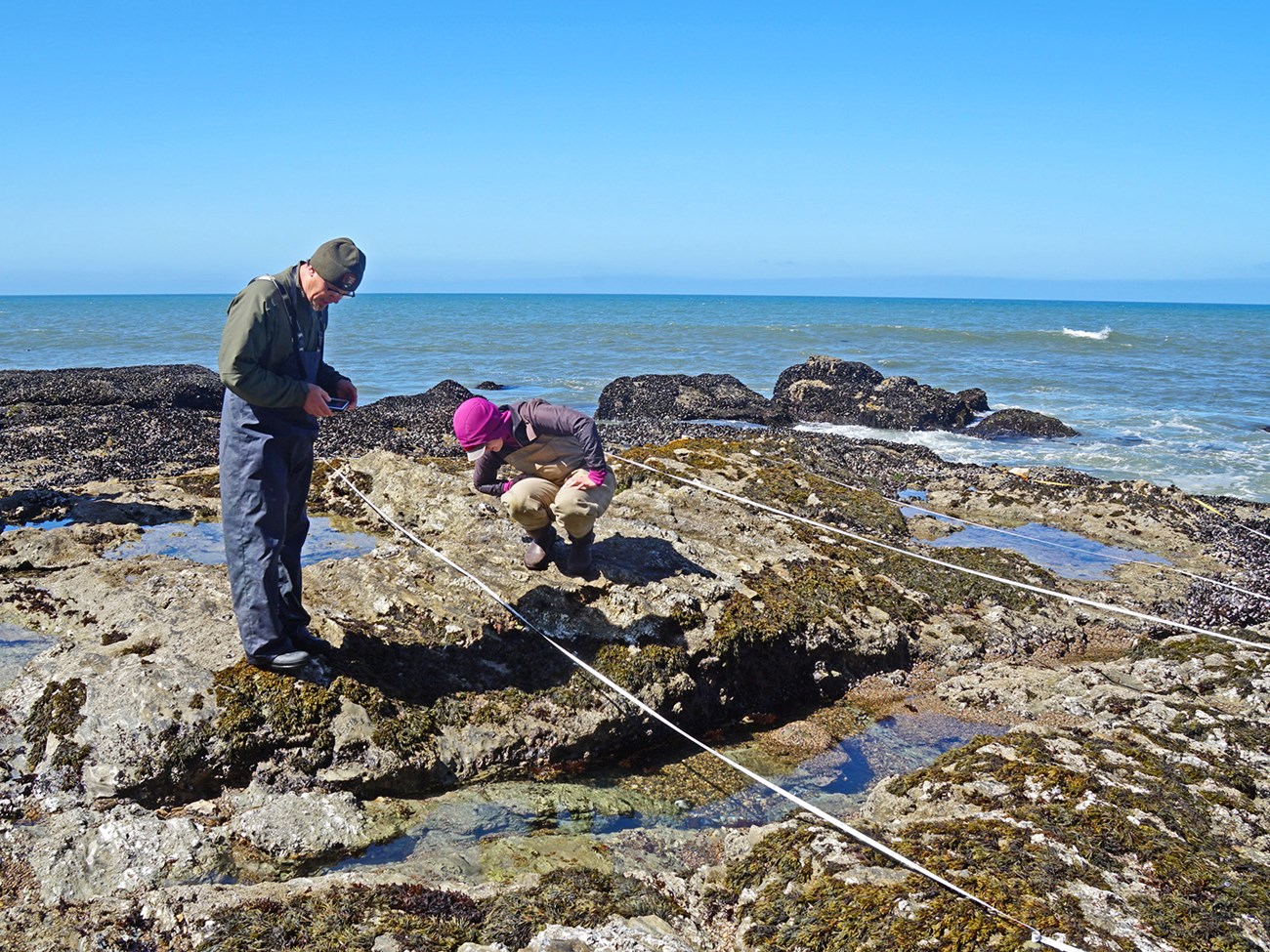Last updated: May 7, 2020
Article
New Rocky Intertidal Biodiversity Surveys Seek a Broader Perspective For Monitoring Change

NPS / Maritte O'Gallagher
July 2019 - Every year, National Park Service biologists conduct intertidal surveys at sites along the San Francisco Bay Area coast, contributing to growing long-term data sets. Typically, they survey fixed plots, focusing on small areas of the reef and specific communities like mussels, barnacles, and algae. Although this approach is good for tracking whether those communities are staying healthy or deteriorating, it is less effective at providing a broader perspective on how the whole reef is doing.
This year, in addition to their usual surveys, park scientists adapted an approach of sampling large areas of the reef at once and documenting all observed species along a set of transect lines. Specifically, they modified a "biodiversity survey" methodology used by a team of taxonomy experts at UC Santa Cruz in the hopes of expanding on the efforts of the UC scientists. So far, these modified biodiversity surveys at different park intertidal sites have gone smoothly, and the team hopes to continue the project into the future.
Preliminary results from this season's surveys indicate that although seastar populations haven't fully recovered from the epidemic of seastar wasting disease, we're beginning to see more steady increases in their size and numbers. However, researchers did observe a big die-off of mussels this season. They are guessing that it had something to do with heat waves passing through the Bay Area earlier in the summer. This isn't great news: with more hot days on the horizon, we could see further declines in mussel populations and the other creatures that depend on them for survival. Mussels are considered "ecosystem engineers" because they modify their habitat to make it more suitable for themselves and other organisms.
Park researchers are also beginning to see more species from southern California appearing in their northern California survey sites. For example, they've observed Caulacanthus, a genus of purple-brown seaweed common to Southern California, and Watersipora subtorquata, an aquatic invertebrate species that has become invasive along the California coast. Researchers hypothesize that rising ocean temperatures could be driving these movement patterns.
Hopefully, broadening our monitoring efforts to survey larger areas and collaborating with other organizations to pool data will help researchers stay ahead of the curve when it comes to our changing park ecosystems.
Learn more about the intertidal monitoring across the California coast by checking out the Multi-Agency Rocky Intertidal Network (MARINe) website, or contact Ben Becker or Darren Fong with any questions.
